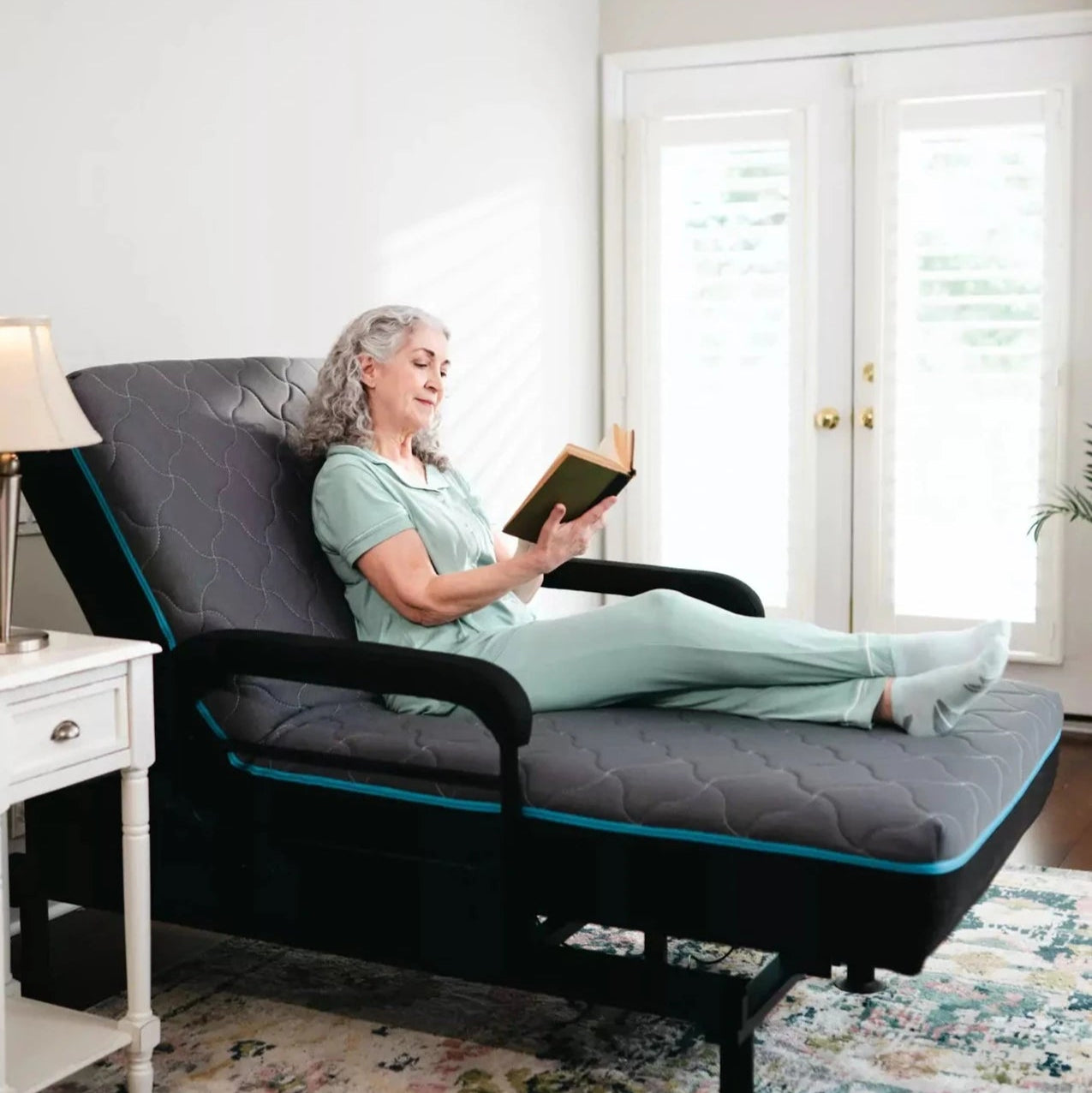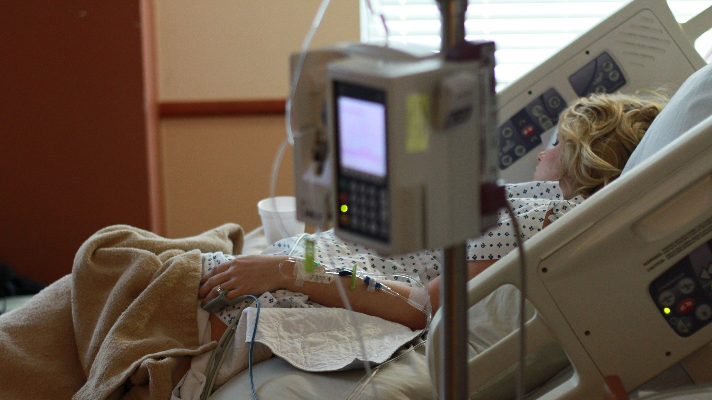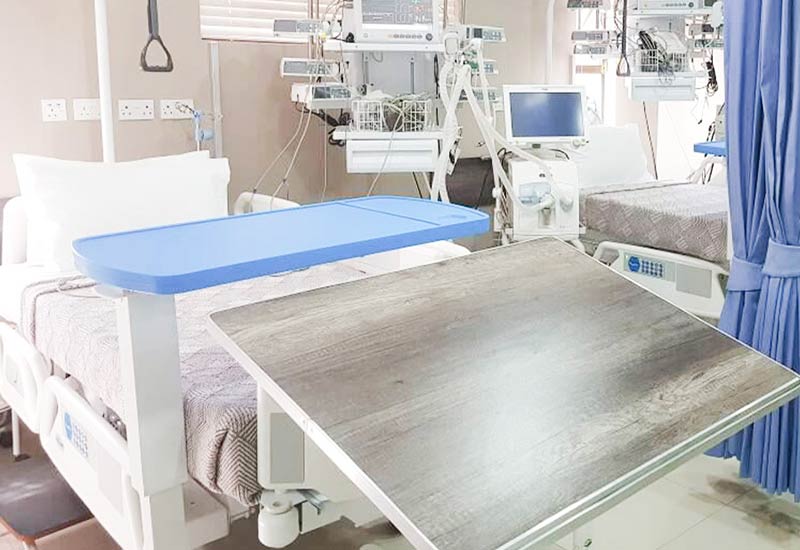Not known Facts About Hospital Beds For Home Use
Table of ContentsThe Best Guide To Hospital Beds For Home UseFascination About Hospital Beds For Home UseHospital Beds For Home Use Things To Know Before You BuySome Known Details About Hospital Beds For Home Use Indicators on Hospital Beds For Home Use You Should KnowThings about Hospital Beds For Home UseThe Main Principles Of Hospital Beds For Home Use
There are 3 main sorts of medical facility beds: handbook, semi-electric, and fully-electric. Even more types of clinical beds exist and they are noted below. These beds use hand cranks to readjust the bed's height and elevate and lower the head and the foot. Hand cranks are normally found at the foot of the bed and need an individual that is literally with the ability of operating.
Semi-electric beds have an electric motor to raise and decrease the head and foot portions of the bed (hospital beds for home use). Full-electric beds have an electric motor that can elevate the head and foot areas of the bed as well as the entire elevation and positioning of the bed.
Getting The Hospital Beds For Home Use To Work
Some models can likewise relocate right into more settings, such as the Trendelenburg (tilt) position. There are several kinds of hospital beds, each designed to meet certain person demands. Right here are some typical types: This is the most usual kind of health center bed, developed for basic clinical usage. It has a handbook or electrically flexible headrest, foot rest, and elevation.
Reduced to the ground than a standard bed. This kind of bed is designed for bigger clients, with a larger framework and greater weight capacity than a conventional bed. This kind of bed is created particularly for kids, with smaller sizes than a conventional bed. Special features such as complete length side rails and anime design.
This kind of bed is designed for critically sick clients that require open monitoring and specialized medical devices such as ventilators and infusion pumps. This sort of bed is developed for usage throughout labor and shipment, with flexible placements and functions to support the mother and baby throughout the birth process.
Hospital Beds For Home Use for Beginners
Several function and the devices execute broadening grip to different components of the vertebra and the extremities without relocating the body. These are simply a couple of examples of the kinds of medical facility beds readily available. The certain kind of bed utilized will certainly depend on the client's condition, clinical needs, and various other factors.
Below is the point you require to know. A one-function hospital bed is a clinical bed that permits a person to move only the head or foot section up or down. A 2 function medical facility bed normally refers to a sort of medical bed that has 2 flexible functions to assist individuals in hospitals or treatment facilities.

6 Simple Techniques For Hospital Beds For Home Use
A 7-function ICU bed is a sort of clinical bed that provides a number of adjustable functions to support critically ill people in an intensive care system (ICU) (hospital beds for home use). The 7 features usually include: Back-rest modification: The back-rest can be adapted to various angles to assist the patient stay up or relax pleasantly
Height modification: The bed can be increased or decreased to make it less complicated for people to enter and out of bed, and for caretakers to give treatment. Trendelenburg setting: The whole bed can be tilted to promote blood circulation and blood circulation in the body. Reverse Trendelenburg position: The bed can also be slanted in the contrary instructions to advertise blood flow and circulation in the top body.
1. What Dimension is a Medical Facility Bed? 2. How Much Does a Hospital Bed Cost? 3. Why Do Health Center Beds Have Side Rails? 4. What Are The Key Health Center Bed Components?. While even more affordable than electric models, these beds require exertion for adjustments. The major advantages of hand-operated beds are their price and reliability, as they don't rely upon power. The requirement for hand-operated effort can important site be a constraint in scenarios where fast adjustments are essential or where caretakers encounter physical obstacles.
The smart Trick of Hospital Beds For Home Use That Nobody is Discussing
They are appropriate for people that need minimal repositioning for comfort or clinical demands. Semi-electric hospital beds provide an equilibrium of manual and electric controls. The head and foot areas are normally changed with electrical controls, while the elevation is readjusted manually. These beds offer a suitable happy medium in between guidebook and fully electrical alternatives, providing convenience of use without the full cost of electric designs.
Semi-electric beds are well-suited for people that need moderate modifications to the head and foot sections yet can take care of without constant elevation adjustments. This makes them a cost-efficient service for those looking for comfort and ease without the demand for constant repositioning. Fully electric hospital beds include electrical controls for smooth modifications to the elevation, head, and foot areas.
Specialized healthcare facility beds, such as ICU beds, lasting treatment beds, and bariatric beds, are thoroughly created to deal with specific medical requirements. These beds provide tailored look after diverse person groups, boosting both end results and convenience. In the complying with sections, we will explore the primary kinds of specialty hospital beds, describing their certain benefits and applications.
With years of experience in making electrical linear actuators - hospital beds for home use and close cooperation with the healthcare sector, TiMOTION is well-positioned to offer reputable medical care services. Our up and down integrated company handles every action of the production process, from design to actuator assembly, guaranteeing we supply extraordinary worth and customized options tailored to your specific requirements
Facts About Hospital Beds For Home Use Revealed

To discover even more regarding integrating these innovations right into your products, contact us today. Further reading:.
Information is sourced from the Medicare Cost Report. Accessed January 2025. Short-term acute treatment health centers have the highest typical number of beds at 187. They are one of the most common type of medical facility in the U.S. and make up greater than 50% of united state healthcare facilities. Kid's hospitals have 178 beds on average and VA health centers typical 175 beds.

Hospital Beds For Home Use Fundamentals Explained
A hospital bed is a bed created particularly for medical purposes. It is not just a location for clients to rest, yet likewise a platform for clinical operations. Unlike normal home beds, health center beds normally have adjustable attributes, which can assist in visit their website clinical staff to make various changes according to the requirements of individuals, such as transforming the elevation, inclination, and assistance angle of the back and legs of the bed.
 Luke Perry Then & Now!
Luke Perry Then & Now! Bradley Pierce Then & Now!
Bradley Pierce Then & Now! Brandy Then & Now!
Brandy Then & Now! Loni Anderson Then & Now!
Loni Anderson Then & Now! Shannon Elizabeth Then & Now!
Shannon Elizabeth Then & Now!